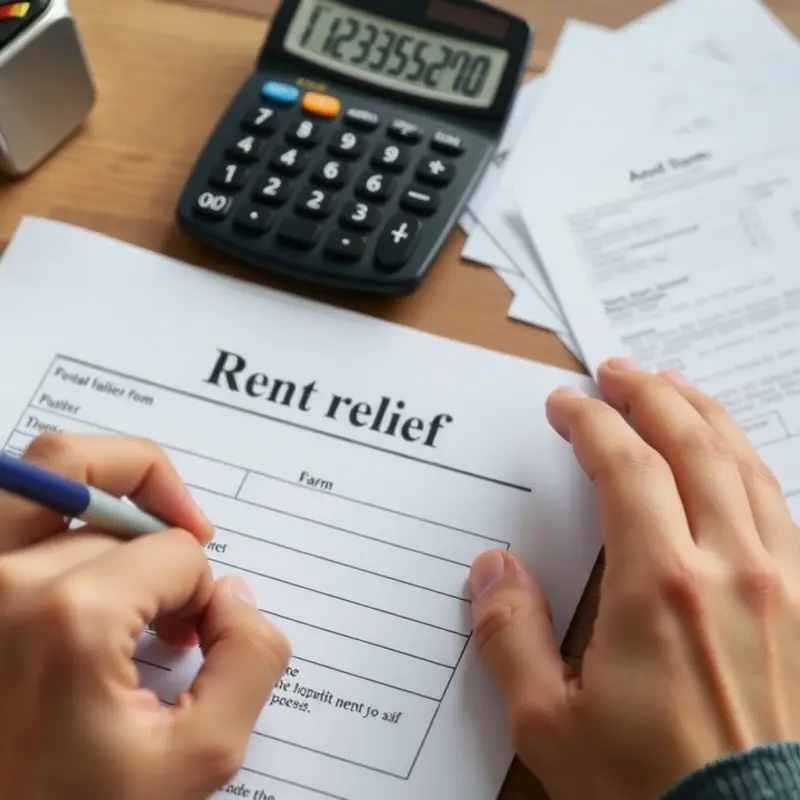Renting can feel overwhelming, especially for young professionals, first-time renters, students, couples, and families trying to make sense of their financial options. With the rising costs of living, understanding rent relief eligibility can provide much-needed clarity and support. Governments and organizations have established various programs aimed at assisting individuals and families to alleviate financial burdens related to housing. This guide will help you navigate the eligibility requirements, ensuring that you’re informed and empowered to make the best decisions for your living situation. Whether you’re new to the renting landscape or looking to understand your rights and options, this resource will break down crucial information to help you find the support you need. Get ready to explore the avenues available for financial relief and learn how to secure your home without the weight of overwhelming expenses.
Understanding Rent Relief Programs

Navigating rent relief programs can be daunting, but understanding the options available is the first step towards securing necessary assistance. Federal, state, and local initiatives collaborate to provide a safety net for those struggling with their housing expenses, especially young professionals, families, and students.
Federal programs often provide the broadest coverage. During challenging times, the government has implemented national schemes like the Emergency Rental Assistance program. This initiative aims to prevent evictions by offering financial aid directly to landlords or utility companies on behalf of qualifying tenants. To be eligible, individuals typically need to demonstrate financial hardship due to reduced income or increased expenses.
State and local governments augment federal efforts with more targeted programs. These initiatives may focus on specific demographics or regions, ensuring support aligns with local needs. For instance, some states provide rental vouchers specifically for those meeting low-income thresholds, while cities with high rent burdens might offer aid packages tailored to median income adjustments.
Young professionals and students, often balancing loan repayments and entry-level salaries, can access tailored assistance programs. Many universities and community organizations fund scholarships or grants to cushion rent costs. Beyond direct financial help, these institutions often provide ancillary services, such as budgeting workshops or job placement assistance. Exploring options tailored to college towns, such as those discussed in college town rental insights, can reveal hidden opportunities for financial relief.
Families, especially those with young children, can turn to family-focused housing vouchers or child-specific expense considerations that accompany rent relief applications. Children’s needs can create additional financial pressures, which some programs are explicitly designed to address. Ensuring stable housing for families is prioritized in these initiatives, recognizing the societal benefits of secure, consistent home environments for children.
Applying for rent relief generally involves gathering documentation to prove both tenancy and financial circumstances. This often includes rental agreements, recent pay stubs, utility bills, and declarations of hardship. States may vary in their specific requirements, so consulting local housing authorities or websites dedicated to rent relief can provide clarity. Initiatives frequently operate on a first-come, first-served basis due to limited funding, making it crucial to prepare and apply promptly.
Accessing rent relief isn’t solely about financial support; these programs frequently incorporate educational resources and counseling services. Workshops on improving financial literacy, maintaining credit scores, or negotiating leases can empower applicants with long-term skills.
In summary, the landscape of rent relief is rich and varied, tailored to assist a diverse array of renters. Understanding your eligibility and the resources available can significantly alleviate the financial strain of renting, providing a pathway towards greater housing stability.
How to Apply for Assistance

Applying for rent relief can be a pivotal step in managing financial strain. To ensure your application is successful, proper preparation is key. Below, we outline the essential steps and provide tips to streamline your application process.
First, gather all necessary documents. Begin with proof of income, such as recent pay stubs, tax returns, or a letter from your employer. This information will help verify your financial need. In addition, prepare a copy of your lease agreement. This document confirms your rental obligations and the amount you pay.
Next, collect any relevant identification documents. Most programs require a government-issued ID, which can include a driver’s license or passport. If applicable, include proof of benefits, such as unemployment aid or food assistance, to further substantiate your application.
Once your documents are in order, find the appropriate application form for the rent relief program in your area. Many programs offer online applications through local government or housing agency websites. Some might require you to print and send a physical form. Pay close attention to submission instructions to avoid delays.
Before submitting your application, double-check all information for accuracy. Incomplete or incorrect submissions can lead to rejection. Take time to ensure every question is answered thoroughly and that all required documents are included. If possible, ask a trusted friend or family member to review your application.
After submitting, retain copies of all submitted materials and any correspondence with the agency. This documentation can be vital if you need to follow up or appeal a decision. Familiarize yourself with the application’s timeline and the expected period for hearing back.
To enhance your application further, include a personal letter that provides context to your financial situation. While not always required, this can humanize your request and elucidate circumstances that led to your need for assistance.
For renters who might find themselves in unfamiliar situations, such as moving abroad, consider the resources available in your new location as part of your planning process moving abroad checklist. Incorporating such strategies can help mitigate future challenges.
Finally, keep updated on your application’s status. If deadlines are approaching without feedback, proactively contact the relevant office for updates. Showing your diligence can demonstrate your commitment to resolving your housing situation.
By meticulously preparing and submitting your application, you can greatly improve your chances of receiving the assistance you need. Remember, attention to detail and accurate documentation are your allies in this process.
Final words
Navigating the world of rent relief eligibility can feel daunting, but understanding your options is vital for securing a stable environment for yourself or your family. Programs are designed to support you through challenging times, whether you’re an individual, couple, or family. By grasping the available relief programs and mastering the application process, you place yourself in a stronger position to gain financial clarity and stability. Remember, the key is to be proactive and reach out for assistance whenever needed. You deserve a safe and affordable home, and the right resources are out there to help you achieve that.









